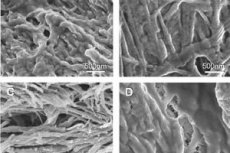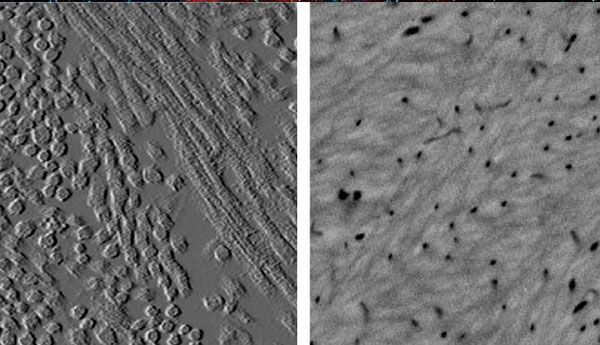Researchers found particles of fibers and blood of ancient animals
Last reviewed: 23.04.2024

All iLive content is medically reviewed or fact checked to ensure as much factual accuracy as possible.
We have strict sourcing guidelines and only link to reputable media sites, academic research institutions and, whenever possible, medically peer reviewed studies. Note that the numbers in parentheses ([1], [2], etc.) are clickable links to these studies.
If you feel that any of our content is inaccurate, out-of-date, or otherwise questionable, please select it and press Ctrl + Enter.

Scientist-paleontologists from Taiwan said that they were able to extract the collagen protein from the bones of a dinosaur - a herbivorous animal that lived during the Jurassic period in the lands of the southwest of present-day China.
To extract the protein tissue, infrared Fourier microspectroscopy was used. In addition to collagen, elements of amides and hematite, a mineral substance, were formed, which was formed from hemoglobin of the blood. Most likely, it was hematite that allowed the squirrel to remain in the bones.
Protein, amides, and hematite scientists isolated their intravascular cavities of rib bones. These are the places in the ribs where the animal had vessels and nerve fibers.
"So far we have only worked with soft tissue prints, and now we have a unique opportunity to see the perfectly preserved raw material," said one researcher, a Canadian scientist from the University of Paleontology of Toronto Robert Reis, commenting on the finding. "I can foresee the situation that we will soon be able to study the biology of dinosaurs in greater detail, thanks to such discoveries. For example, the protein particles found can be used as a material for determining the affinities of different groups of animals. This will identify dinosaurs in terms of evolution, learn more about their lifestyle, give an analysis of their genealogy, and also trace the relationship of the lizards in nature. "
Found protein remains about two hundred million years - and it's really luck that scientists were able to identify these structures.
The dinosaurs in question are the so-called lufengosaurs, large lizards of about 8 meters long. They had an expressive long neck, and fangs and claws more resembled those of predators - in spite of the fact that the lufengosaurs were herbivorous animals. Presumably, the claws served lizards as a defense against attack by other fauna.
Scientists know a lot about dinosaurs, but isolated samples of protein tissues will help specialists to fill a large amount of missing information. However, the researchers also had one new question: how did the protein particles manage to survive for such a huge amount of time? There is only the assumption that this was due to the mineral substance that formed after the decomposition of the hemoglobin of the lizard. Formed crystals could become a kind of protective layer from the effects of destructive processes.

Fibrillar protein collagen is considered the main constituent of tissues of a living organism. It is present in multicellular creatures, but it is not found in plants, in unicellular microorganisms and in fungi. Collagen is considered the most common protein substance in mammals: its proportion to all proteins in the body is about 30%.
The information given is provided by the scientific journal Nature Communication.

 [
[